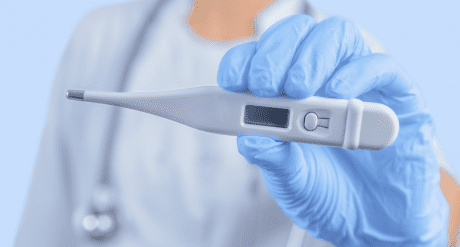
Medical Devices and Sustainability

This blog was originally posted on 13th November, 2023. Further regulatory developments may have occurred after publication. To keep up-to-date with the latest compliance news, sign up to our newsletter.
AUTHORED BY: DENISE MCDERMOTT, SENIOR REGULATORY COMPLIANCE SPECIALIST, COMPLIANCE & RISKS
The United Nations Brundtland Commission defined sustainability as “meeting the needs of the present without compromising the ability of future generations to meet their own needs.”[1] Ultimately, this long term goal, encompassing environmental, social and economic sustainability, aims to improve lives, now and into the future.
Sustainability in the medical technology industry is an important aspect of this goal, with implications for both the environment and human health. Emissions and waste from the medical device industry continue to impact our environment, therefore sustainable manufacturing practices and products may offer hope for a planet experiencing growing stress on its resources. MedTech Europe states that environmental and social considerations are an important part of the medical technology industry and they place an emphasis on “good health and well-being, responsible consumption and production, climate action and partnerships”[2]. Sustainability within the medical device industry may promote innovation, prompting us to imagine new ways of managing our processes and decreasing our reliance on finite resources while upholding labor standards and sustainable supply chains.
Environment, Social and Governance (ESG) Regulations
Several environment, social and governance (ESG) regulations have been published recently which hold companies responsible for maintaining environmental and health standards in their supply chains. These regulations promote sustainable manufacturing practices and cover issues from carbon emissions to human rights. Many of these regulations apply to companies of significant size and while this blog focuses on sustainability in the medical device industry, the scope of such rules are regularly being updated so it is important to keep up to date with changes.
In Germany for example, the Corporate Due Diligence in Supply Chains Act of 2021 [3] applies to all companies regardless of their legal form and states that companies are responsible for their entire supply chains. From 1 January 2024, the size of the company within the scope of this Act will decrease from 3,000 to 1,000 employees. As per Section 3 of the Act, companies are obliged to observe human rights and environmental due diligence obligations in their supply chains and must submit reports as evidence of this. In the EU, the Corporate Sustainability Reporting Directive (CSRD) [4] applies to all large companies with more than 250 employees and a 40 million euro turnover and will take effect in stages. It must be implemented by member states by July 2024.
Medical Device Production
With regards to medical device production, several approaches can be taken across the life cycle of a device to ensure it is manufactured in a sustainable way. Circular design, as well as reduction of packaging and labeling can have positive environmental implications. During the manufacturing phase, important consideration can be given to the use of sustainable materials. During the distribution of medical devices, carbon footprint should be lowered and inefficiencies in inventory management should be eliminated.
Furthermore, efforts to reduce the volume of disposable components is important. A shift to reusable, reprocessed or recycled medical devices may have significant impact, since single-use medical devices are often disposed of by incineration. However, many challenges remain. New, more sustainable packaging or materials, can mean a design change, which can mean additional testing and re-certification. Moreover, reprocessing is not always allowed, and consideration must be given to patient safety when deciding if a medical device can be adequately sterilized. Article 17 of Regulation (EU) 2017/745 on medical devices (MDR) [5] covers single-use devices and their reprocessing and states that “Reprocessing and further use of single-use devices may only take place where permitted by national law and only in accordance with this Article…only reprocessing of single-use devices that is considered safe according to the latest scientific evidence may be carried out.”
Regarding manufacture and disposal, there are several challenges including the classification of hazardous material and infection risks. In this regard, the EU MDR states that; “Devices shall be designed and manufactured in such a way as to facilitate their safe disposal and the safe disposal of related waste substances by the user, patient or other person. To that end, manufacturers shall identify and test procedures and measures as a result of which their devices can be safely disposed after use. Such procedures shall be described in the instructions for use.” Therefore per the EU MDR, manufacturers must identify appropriate measures for disposal of their devices and describe these procedures in the IFU. Several other regulations refer to the environmental impact of medical devices at end of life including the WEEE Directive 2012/19/EU [6] which lays down measures to protect the environment and human health by aiming to reduce the impact of waste from electrical and electronic equipment (WEEE).
Medical Devices and Sustainability – What’s Next?
More than ever, new methods must be employed to reduce the environmental impact of the medical technology industry. While safety and performance are paramount, new regulations are needed to outline and dictate sustainable approaches throughout the life cycle of a medical device. We must aim for sustainably manufactured devices that contribute to environmental, social and economic sustainability goals whilst maintaining patient safety.
References
- https://www.un.org/en/academic-impact/sustainability
- https://www.medtecheurope.org/environmental-and-social-sustainability/
- Germany: Corporate Due Diligence In Supply Chains Act, BGBl. 2959, 2021, (Lieferkettensorgfaltspflichtengesetz – LkSG)
- EU: Annual Financial Statements, Consolidated Financial Statements and Related Reports of Certain Undertakings, Directive 2013/34/EU & Others – Amendment – (on corporate sustainability reporting), Directive (EU) 2022/2464, Corporate Sustainability Reporting Directive (CSRD)
- Regulation (EU) 2017/745 of the European parliament and of the Council of 5 April 2017 on medical devices
- WEEE Directive 2012/19/EU on waste electrical and electronic equipment (WEEE)
Never Miss A Regulatory Update
Join 50,000 compliance professionals for monthly updates on hot compliance issues, free regulatory webinars and whitepapers and market insights on the latest trends


